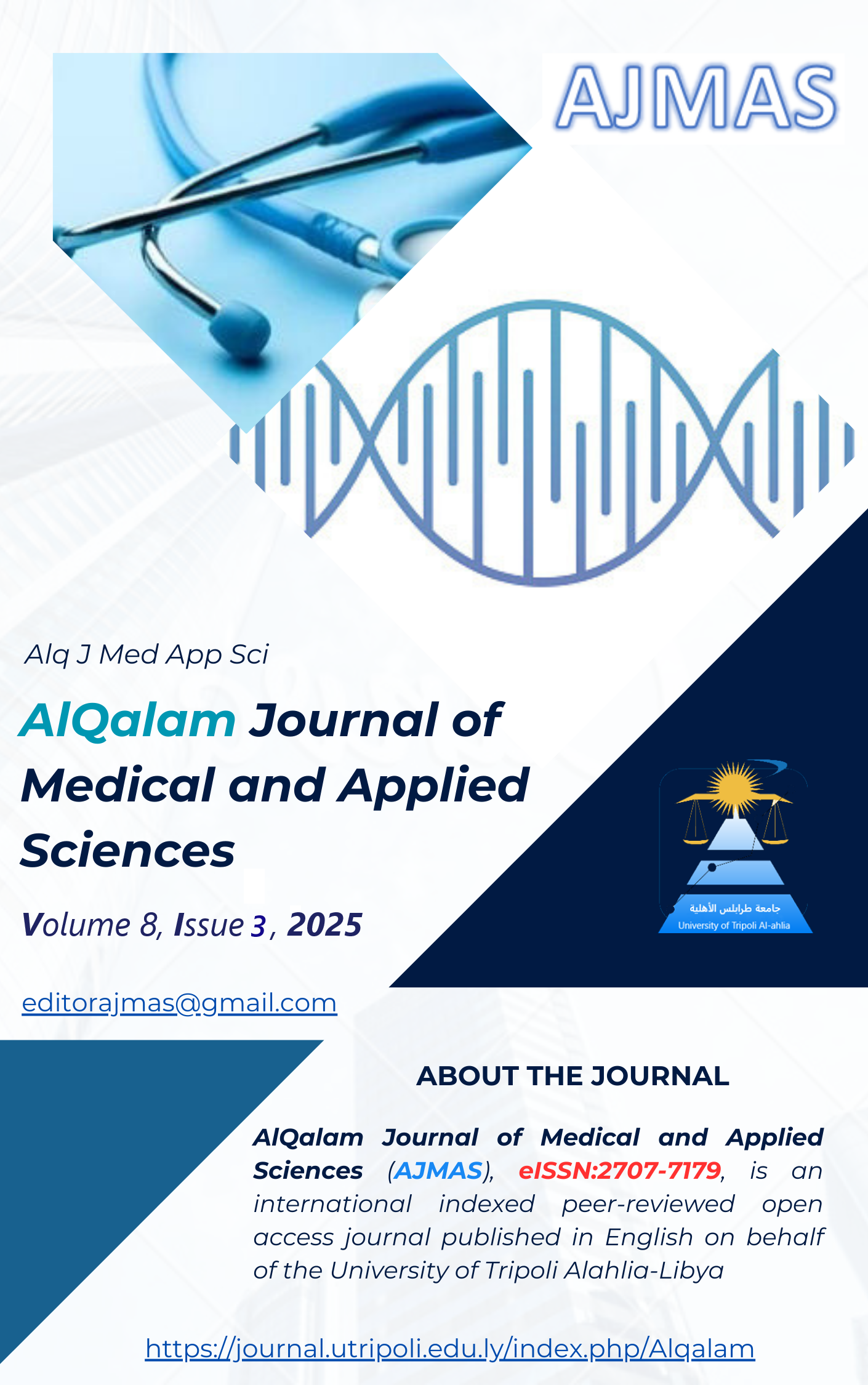Nasal Carriage and Methicillin Resistance of Staphylococcus aureus among High School Students in Eastern Libya, the city of Tobruk
DOI:
https://doi.org/10.54361/ajmas.258314Keywords:
Nasal Carriage, Staphylococcus Aureus, MRSA, Antibiotic Resistance.Abstract
Staphylococcus aureus is a common causative agent of infections, capable of transmitting from asymptomatic carriers to healthy individuals. It can colonize the anterior nasal openings and exhibits a high resistance to various antibiotics. factors like poor hygiene practices and surrounding school conditions make students particularly susceptible to bacterial infections. This study was conducted on 254 nasal samples from high school students in Tobruk to determine the nasal carriage rate of methicillin-resistant Staphylococcus aureus (MRSA). The study included students aged 15 to 20 years. Bacteria were isolated and identified using optimal bacteriological methods, including the examination of bacterial cultures, colony morphology, Gram staining, and biochemical tests. Methicillin-resistant strains were confirmed by using the Xpert MRSA test. Out of 254 samples, 101 contained Gram-negative bacteria, and 153 contained Gram-positive bacteria. Among the Gram-positive samples, 138 contained Staphylococcus spp., and 15 samples contained other Gram-positive bacterial species. Among the 138 Gram-positive isolates, 48 were identified as Staphylococcus aureus, representing 18.9%, of which 26 isolates were methicillin-resistant (MRSA), accounting for 54.2% of the positive samples. Male students carried MRSA (53.8%) more than female students (46.2%), with no significant gender differences. Students aged 15-17 had a higher rate of nasal carriage of methicillin-resistant S. aureus (58.3%) compared to those aged 18-20 (41.7%). .(38.9%)The 26 MRSA isolates showed 100% resistance to Penicillin, Oxacillin, and Cefoxitin. Resistance to Tetracycline, Erythromycin, and Gentamicin ranged between 19.2% and 30.8%, while resistance to Clindamycin did not exceed 3.8%. The isolates were 100% susceptible to Trimethoprim, Moxifloxacin, Levofloxacin, Linezolid, and Ciprofloxacin.
Downloads
Published
How to Cite
Issue
Section
License
Copyright (c) 2025 Laila Alfageih, Heba Hassan, Sara Fathi

This work is licensed under a Creative Commons Attribution 4.0 International License.















